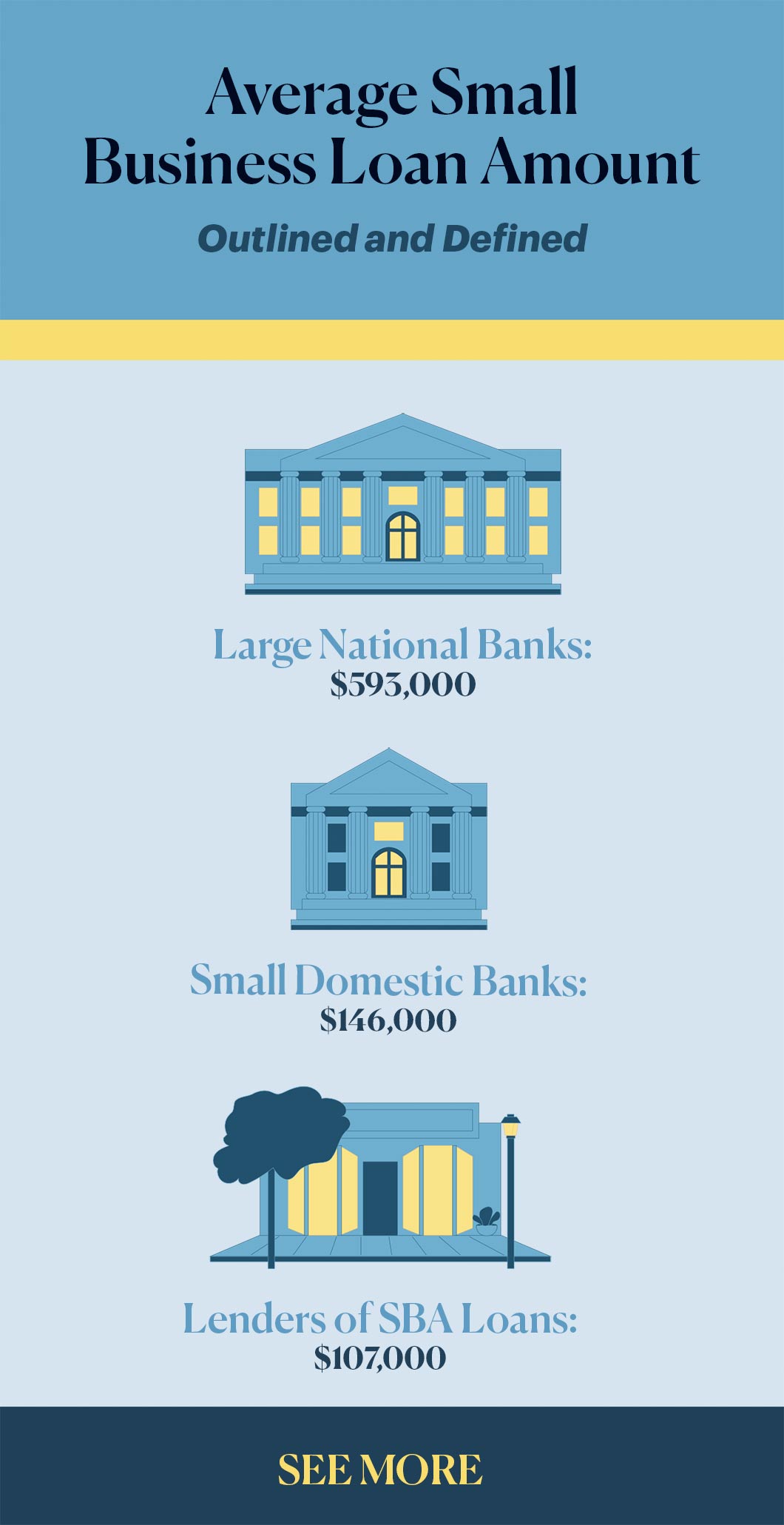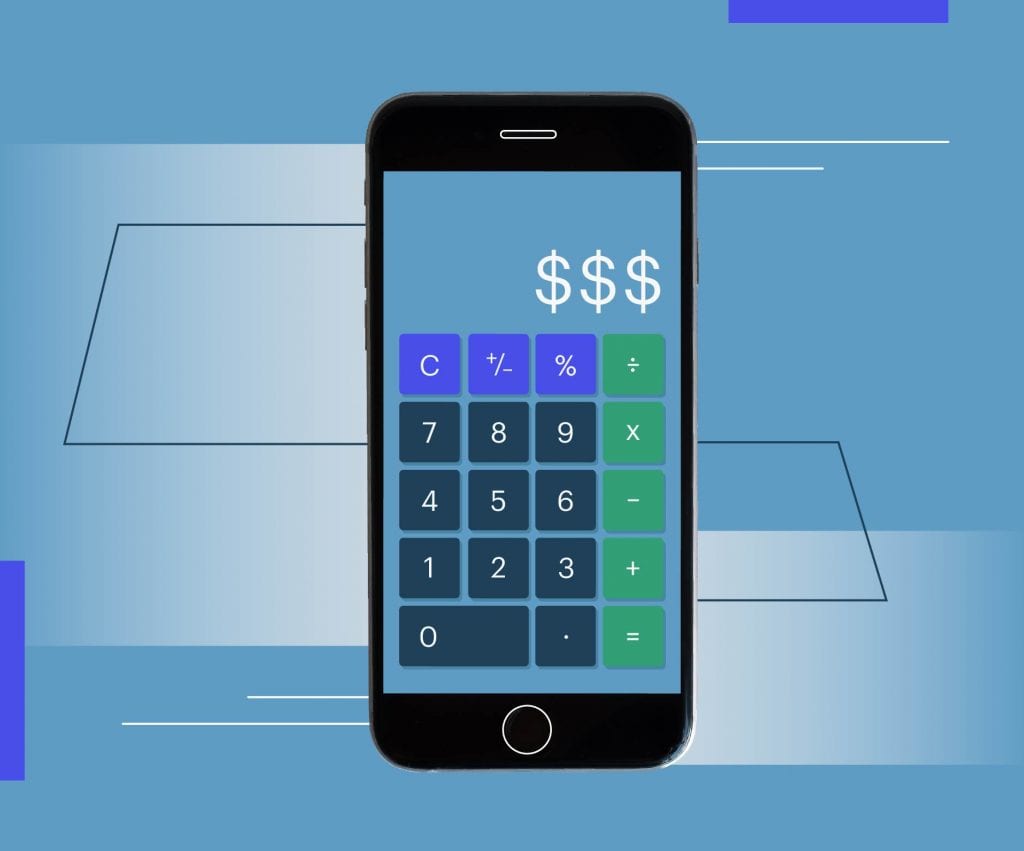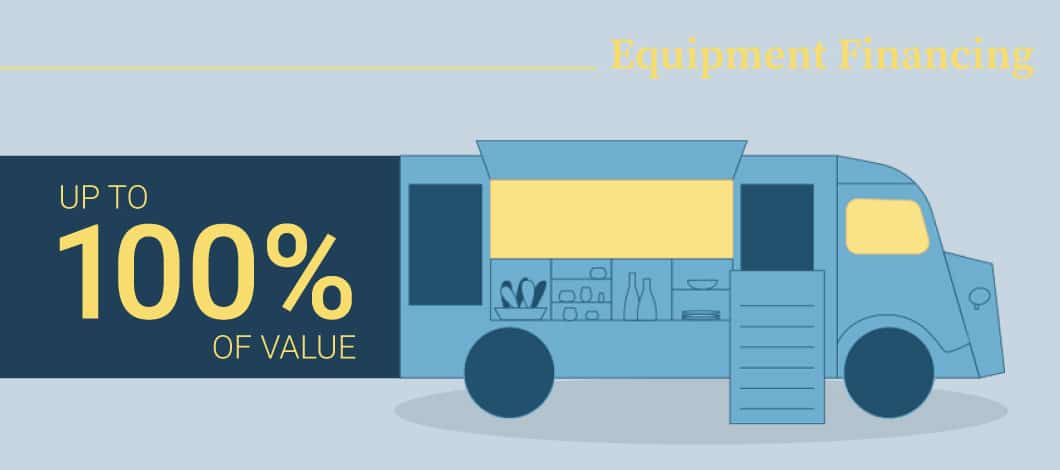How do your funding needs compare with those of business owners throughout the U.S?
We’ve compiled every average small business loan amount by lender and loan type to help you gauge the amount of financing you might qualify for as a small business owner.
Average Business Loan Amount by Lender
Did you know the average of all commercial and industrial loans (C&I) is $663,000, according to the most recent Federal Reserve Banks’ Survey of Terms Lending data? That data was from 2017, though. And while the agency hasn’t updated its data since then, it released a statement in Dec. 2021 indicating that C&I loan balances actually decreased by 18.6% compared with the third quarter of 2020 despite a near 10% increase in new loans.
So when you’re asking, “What’s the average small business loan amount?” the answer is tricky.
Besides the difficulty in finding updated information from a reputable source, such as the Federal Reserve Banks, the truth is the average business loan size varies by lender and loan type. But learning what lenders look for is a good starting point in deciding how to get a small business loan and what types might work best for you.
Let’s take a look at the average small business loan amount you could find from banks and online lenders, including Fast Capital 360’s lending partners.
| Lender | Average Loan Amounts |
| Large National Banks | $593,000 |
| Small Domestic Banks | $146,000 |
| SBA Loans | $107,000 |
| Fast Capital 360 Lenders | $37,258 |
Large National Banks: $593,000
Banks are considered the gold standard in business financing. They can offer some of the best rates, long repayment terms and high average business loan amounts. The average business loan amount issued by large banks was $593,000 in 2017, according to the most recent Federal Reserve Banks’ data.
Large banks generally shy away from smaller commitments as lower principals accrue less interest. Banks are also risk-averse, preferring to work with large established corporations over smaller ones.
For this reason, they’re not the right fit for every business owner. If you’re looking for modest loan amounts or your credit profile doesn’t meet a bank’s strict requirements, you’ll need to look at other lenders.
Related: Bad Credit Business Loans? These Are Your 5 Best Options
Small Domestic Banks: $146,000
Smaller banks (such as regional banks and credit unions) tend to have less money. This makes it difficult for them to offer the multimillion-dollar loans that large national banks can and naturally makes their average small business loan amount less than that of large national banks.
To be precise, according to the Federal Reserve data, the average small business loan amount was $146,000 — nearly $450,000 less than larger banks. The risk of debt charge off on larger loans is too significant for smaller, regional banks. In turn, these lending institutions are a good source for small business owners looking to fund less capital-intensive projects.
Despite the lower dollar amounts, qualification requirements for loans issued by regional banks and credit unions are strict. Business owners working to improve their financial profile may have to consider alternative routes to financing.
Lenders of SBA Loans: $107,000
The average business loan amount for all types of loans backed by the Small Business Administration (SBA) was $107,000, according to the most recent Federal Reserve data.
While the SBA isn’t a lender, if your small business can’t qualify for conventional bank funding, this government agency will guarantee a portion of your loan offered through a partner lender. This makes it less risky for lenders to approve borrowers.
Here is the average SBA loan amount that’s offered by each type of institution.
PPP Loans: Less than $95,000
When the COVID-19 pandemic hit the U.S. in full force in spring 2020, the SBA Paycheck Protection Program (PPP) provided financing so businesses could have working capital, including payroll. These loans aimed to help the U.S. weather the economic downturn as many businesses deemed “non-essential” had to temporarily close or scale back operations to slow the spread of COVID-19.
According to the SBA, the average PPP loan size was less than $95,000.
SBA Loans Issued by Large Banks: $59,000
You might wonder why the average SBA loan amount of $59,000 is sharply lower than the small business loan amount of $107,000 large banks typically offer. That’s because (in non-pandemic times) larger banks generally focus on offering conventional bank loans.
Of the inventory of loans large banks provided in 2017, 0.1% of the value of all bank loans were SBA-backed loans, according to Federal Reserve data.
SBA Loans Issued by Small Banks: $165,000
Smaller banks don’t usually have the opportunity to take a risk on multimillion-dollar loans. With the government guaranteeing a portion of SBA loans, however, it lessens their risk and makes it worth offering more high-figure approvals, with typical small business loan amounts of $165,000.
Small banks also provide more than double the total value of SBA loans compared with large banks. If you’re looking for an SBA loan, start your search for a lender at a regional bank.
Related: Here Are 10 of the Best SBA Lenders for Small Business Financing
Alternative Lenders: $37,258
Alternative lenders look at your business’s overall financial health to assess your fundability. This means they’re more likely to work with younger, smaller businesses.
As a result, the average small business loan amount offered through online alternative lenders is typically lower. In 2021, the average small business loan amount for all financing offered through Fast Capital 360’s partner lenders was $37,258.
Qualified borrowers with high annual revenues can still receive 7-figure loans, but the interest rates and repayment structure will be different from what large banks offer.
Average Business Loan Amount by Alternative Funding Type
You can use other options to fund your small business.
The following are alternatives to term loans and are offered by many online lenders. These funding types may not share the same low interest rates offered by banks or SBA-backed programs, but they have flexible terms and are options for businesses with bad credit.
Here are the average small business loan maximum amounts for these other popular financing options:
| Loan | Average Funding Amounts |
| Business Line of Credit | $22,000 |
| Short-Term Loan (18 months or less) | $20,000 |
| Longer Term Loans (2-5 years) | $110,000 |
| Equipment Financing | 100% of equipment value |
| Invoice Financing | 80%-90% of accounts receivable value |
Business Line of Credit: $22,000
Instead of a one-time sum, a business line of credit gives you access to a revolving amount of funding to provide the cash flow you need to run your business.
With a business line of credit, you withdraw and use funding as needed. You pay back what you borrow and then take out additional funds when you need them.
Banks offer higher credit lines to qualified borrowers, but online lenders approve businesses unable to qualify for those high limits, albeit at a considerably lower amount. The average business loan amount for a line of credit is $22,000, according to Fundera.
Short-Term Loans: $20,000
Short-term loans are popular among businesses with a limited credit history or a “bad” credit score.
A short-term loan is a good funding option if you’re looking for an infusion of working capital. The average business loan size for this type of financing is reportedly $20,000.
Longer Term Loans: $110,000
Longer term loans (also known as medium-term loans) are often sought by business owners who are looking to spread payments over time since terms typically range from 2-5 years. They may use the funds to buy equipment, refinance debt or fund renovation projects, for example.
Often, term loans offer higher funding amounts, extended repayment periods and lower interest rates when compared with other financing options.
What is a typical small business loan amount for longer term loans? Reportedly, the average is $110,000.
Equipment Financing: Up to 100% of Value
If you’re in the market for new equipment, it isn’t the average small business loan amount but the maximum business loan amount you should consider. Instead of basing the total amount on what you’re qualified to receive, equipment financing considers your fundability alongside the value of what you want to purchase.
For example, a qualified borrower applying for $50,000 in commercial truck financing would likely be given a loan for the full $50,000.
Depending on the equipment’s longevity, however, you could be required to submit a down payment. Check with your lender during the application process to learn what you could be on the hook for upfront.
Invoice Financing: Up to 80%-90% of Receivables
With accounts receivable (or invoice financing), lenders typically give you up to 80%-90% of the outstanding invoices you wish to finance. The amount of funding you get correlates with the value of what’s already owed to you.
Get Your Business Loan Options in Minutes
Applying for Your Small Business Loan
Now that you have an idea of various average small business loan maximum amounts, it’s time to assess your own situation.
If you’re applying for a long-term bank or an SBA loan, you’ll need to draft a loan request letter detailing how much you need, why you need it and other information to prove your fundability.
Think alternative financing would be a better fit for your small business? Let one of our expert Business Advisors guide you through the process and match you with a top lender.
Use our small business loan calculators to get a better idea of what payments you could anticipate.
And if you need to borrow more than the average small business loan amount, see what options are available to fully fund your business’s success.






